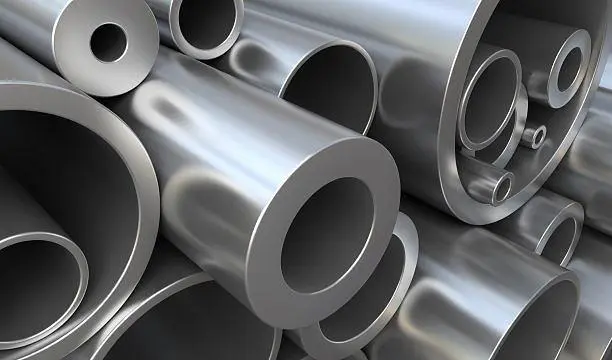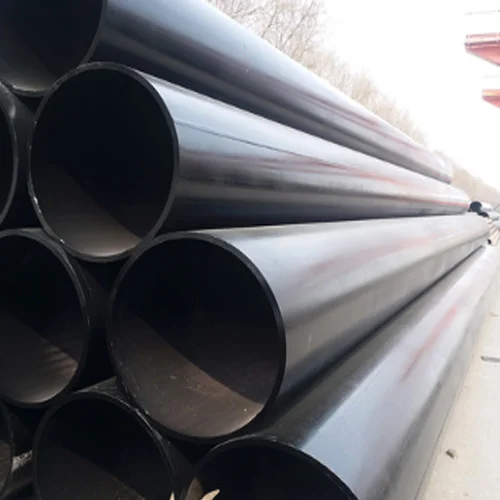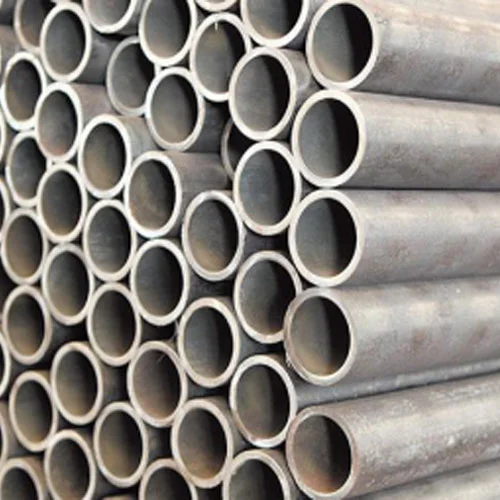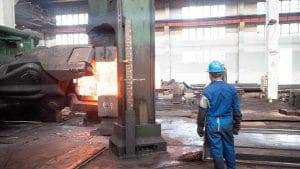مرحبًا بك في مدونتي!
قبل أن نتعمق في المحتوى، أود أن تنضموا إليّ على منصات التواصل الاجتماعي الخاصة بي حيث أشارك المزيد من الأفكار وأتفاعل مع المجتمع وأنشر التحديثات. إليك كيف يمكنك التواصل معي:
فيسبوك : فيسبوكhttps://www.facebook.com/profile.php?id=61559060896490
والآن، لنبدأ رحلتنا معًا. أتمنى أن تجدوا المحتوى هنا ثاقباً وجذاباً وقيّماً.
مقدمة
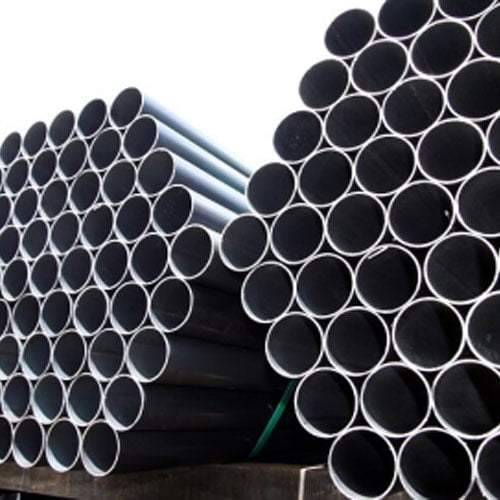
Steel pipes are versatile and indispensable components used in various industries, from construction and manufacturing to oil and gas. The selection of the appropriate steel pipe size is a critical factor in ensuring the optimal performance, safety, and longevity of any project. A well-chosen steel pipe can significantly impact the overall efficiency and cost-effectiveness of a system. In this comprehensive guide, we will delve into the common steel pipe sizes, their applications, and factors to consider when choosing the right size for your specific needs. We will also explore the importance of understanding the different types of steel used in pipe manufacturing and the impact of factors such as pressure, temperature, and corrosion resistance on pipe selection.
الفهم Steel Pipe Sizes
Steel pipes are typically measured by their nominal pipe size (NPS), which is an arbitrary number that does not correspond directly to the exact inside diameter of the pipe. However, it provides a standardized reference for pipe sizing and selection. Other important dimensions include the schedule number, which indicates the pipe wall thickness, and the outside diameter. The schedule number is a numerical designation that correlates to the pipe’s pressure rating and wall thickness. Higher schedule numbers correspond to thicker pipe walls, which can withstand higher pressures.
أحجام أنابيب الصلب الشائعة وتطبيقاتها
| NPS | الجدول الزمني | التطبيقات النموذجية |
|---|---|---|
| 1/2″ | 40 | Water supply lines, gas lines, and HVAC systems in residential and commercial buildings. |
| 3/4″ | 40 | Water supply lines, gas lines, and HVAC systems in residential and commercial buildings. |
| 1″ | 40 | Water supply lines, gas lines, and HVAC systems in residential and commercial buildings, as well as industrial applications such as compressed air lines and fire sprinkler systems. |
| 1 1/2″ | 40 | Fire sprinkler systems, industrial piping, and commercial plumbing systems. |
| 2″ | 40 | Fire sprinkler systems, industrial piping, and commercial plumbing systems. |
| 3″ | 40 | Industrial piping, structural support, and commercial plumbing systems. |
| 4″ | 40 | Industrial piping, structural support, and commercial plumbing systems. |
العوامل المؤثرة Steel Pipe Size الاختيار

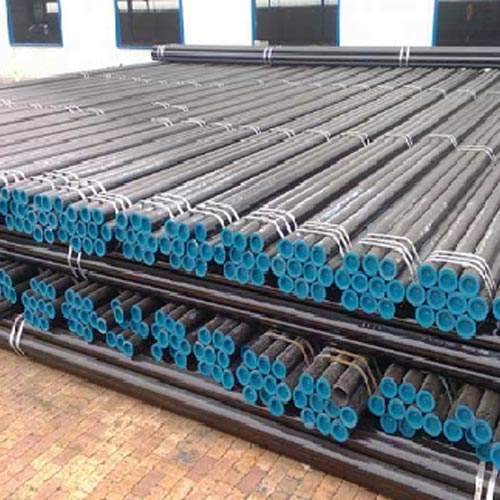
Several key factors influence the choice of steel pipe size:
- Working pressure: The maximum pressure that the pipe will be subjected to in normal operating conditions. This is crucial for ensuring the pipe’s structural integrity and preventing leaks or failures.
- درجة الحرارة: The operating temperature of the fluid or gas flowing through the pipe. High temperatures can affect the pipe’s mechanical properties and require careful consideration of material selection and wall thickness.
- مقاومة التآكل: The potential for corrosion and the need for corrosion-resistant materials. Exposure to corrosive substances, such as chemicals or saltwater, can significantly reduce the lifespan of a steel pipe.
- Flow rate: The volume of fluid or gas that needs to be transported through the pipe. The pipe’s diameter and flow velocity are essential factors in determining the flow rate.
- توافق المواد: The compatibility of the pipe material with the fluid or gas being transported. Certain fluids or gases may react with specific steel alloys, leading to corrosion or other issues.
Applications of Steel Pipes
Steel pipes find extensive use in a wide range of industries and applications:
- البناء: Structural support, scaffolding, and piping systems for water, gas, and sewage in residential, commercial, and industrial buildings.
- التصنيع: Conveying fluids, gases, and solids, as well as providing structural support for equipment and machinery.
- النفط والغاز: Transporting crude oil, natural gas, and refined products through pipelines.
- السيارات: Fuel lines, brake lines, and structural components in vehicles.
- البحرية: Piping systems for seawater, bilge water, fire protection, and other essential functions on ships and boats.
- توليد الطاقة: Piping systems for steam, water, and other fluids in power plants.
اختيار المناسب Steel Pipe Size

To select the appropriate steel pipe size, consider the following steps:
- Determine the application: Clearly identify the specific use for the pipe, whether it’s for water supply, gas distribution, fire protection, or industrial processes.
- Calculate the required flow rate: Determine the volume of fluid or gas that needs to be transported per unit of time. This information is crucial for selecting the appropriate pipe diameter.
- Consider the working pressure and temperature: Ensure that the pipe can withstand the maximum pressure and temperature conditions it will be subjected to.
- Evaluate corrosion factors: Assess the potential for corrosion and select a suitable steel alloy or apply protective coatings.
- Consult relevant standards and codes: Adhere to industry standards and building codes, such as ASME B31.1 for power piping and ASME B31.3 for process piping, to ensure compliance and safety.
- Consider future expansion: If there’s a possibility of future expansion or increased demand, it’s wise to select a pipe size that can accommodate future needs.
الخاتمة
The selection of the correct steel pipe size is a critical decision that can significantly impact the performance, safety, and cost-effectiveness of any project. By carefully considering the factors discussed in this guide and consulting with industry experts, you can make informed decisions and choose the most suitable pipe for your specific needs.
الأسئلة الشائعة
What is the optimal steel pipe size for a residential plumbing system?
The optimal steel pipe size for a residential plumbing system varies based on factors like water flow rate, fixture requirements, and water pressure. Common sizes include ½ inch for cold water supply, ¾ inch for hot water supply, and 1 inch for main water lines. It’s essential to consult local plumbing codes and consider future expansion needs when selecting steel pipe sizes.
How does steel pipe size affect water pressure?
Steel pipe size directly impacts water pressure. Smaller diameter pipes can restrict water flow, leading to reduced pressure at fixtures. Larger diameter pipes can maintain higher water pressure, especially in multi-story buildings or systems with multiple fixtures.
What factors should I consider when choosing a steel pipe size for a commercial building?
When selecting steel pipe sizes for commercial buildings, factors like the number of fixtures, water flow requirements, fire protection systems, and future expansion plans are crucial. Consulting with a professional engineer or plumber can help determine the appropriate steel pipe sizes for specific commercial applications.
كيف steel pipe size impact energy efficiency?
Proper steel pipe sizing can contribute to energy efficiency. Undersized pipes can lead to increased pump energy consumption due to higher friction losses. Conversely, oversized pipes may result in longer heat-up times and increased energy usage for water heating.
What are the common challenges associated with improper steel pipe sizing?
Improper steel pipe sizing can lead to various issues, including inadequate water pressure, reduced flow rates, increased energy consumption, noise, and potential water hammer. Consulting with a professional can help avoid these challenges and ensure optimal performance of your plumbing system.

